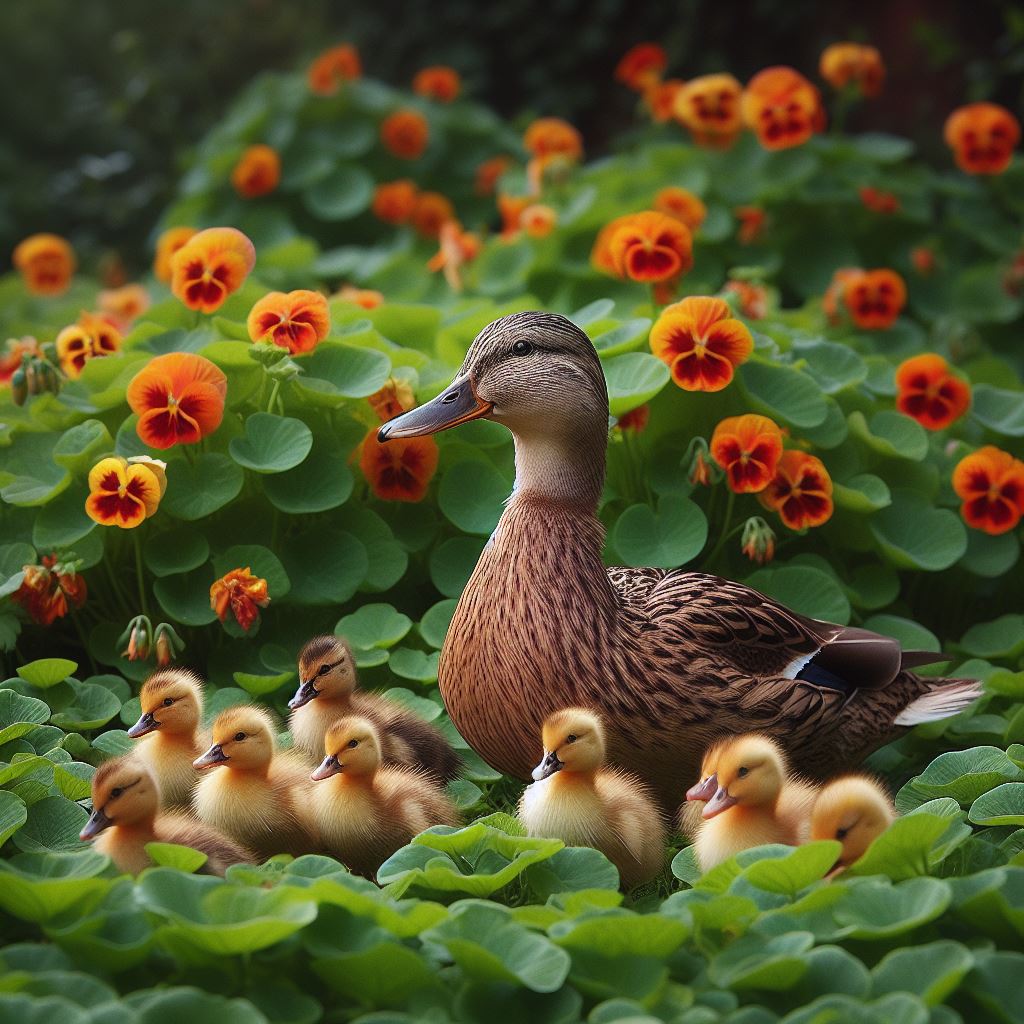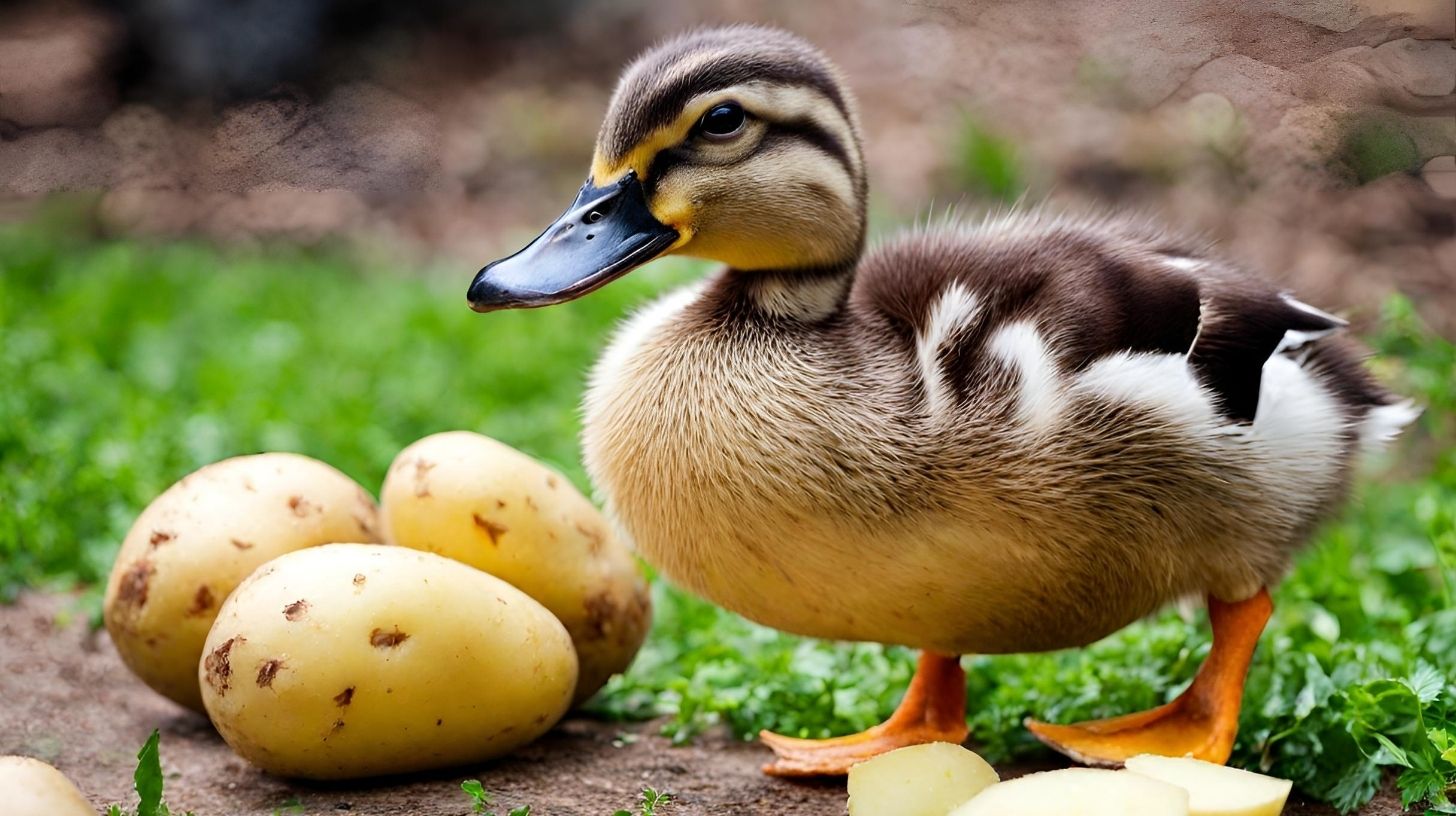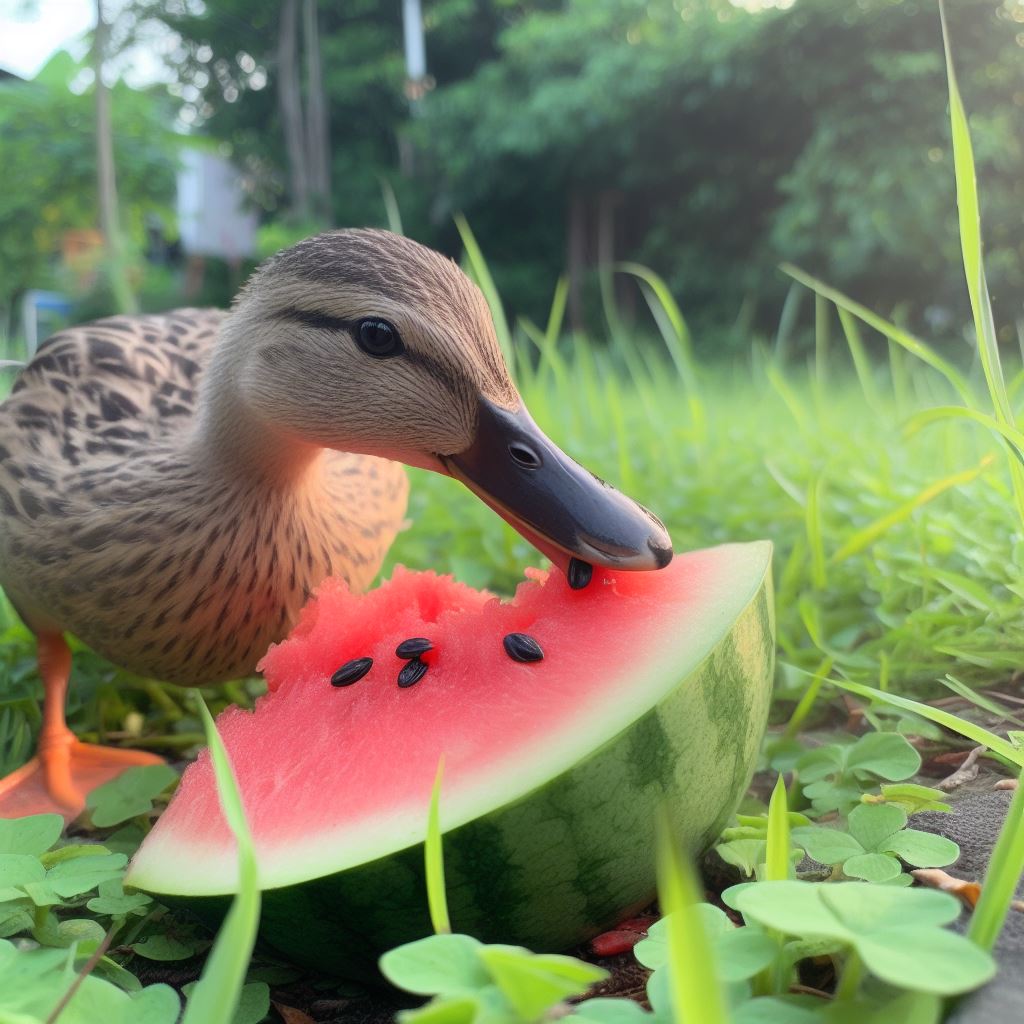Do Ducks Have Tails? Unravel the Mystery Today!

Table of content:
- What Do Duck Tails Look Like?
- Why Do Ducks Have Tails?
- Do Male and Female Ducks Have Different Tails?
- Do Ducklings Have Tails?
- How Long Are Duck Tails?
- Do Different Duck Species Have Different Tails?
- Why Do Some Ducks Have Long Tails?
- Why Do Ducks Bob Their Tails?
- Do Pet Ducks Have Their Tails Docked?
- Final Thoughts
Ducks are a common sight in ponds, lakes, and rivers. With their distinctive webbed feet, colorful feathers, and loud quacking, they are easily recognizable birds. But have you ever taken a close look at a duck’s backside? Ducks do indeed have tails, which serve important functions.
In this article, we’ll explore duck tails in depth – their purpose, appearance, differences between males and females, and more.
What Do Duck Tails Look Like?
Ducktail feathers are short, wide, and stiff compared to body feathers. They are typically iridescent shades of green, blue, brown, or black, sometimes with lighter tips. Breeds like Mallards have metallic purplish-green plumage on their tails. Male Wood Ducks display brightly colored tails in red, yellow, black and white.
Most duck tails are rounded or square-shaped at the end. A few species like the Ruddy Duck have thin, pointed tails instead. The edges of the tail may be wavy or have defined notches. Tail patterns and coloring can help identify different duck species and sexes. For instance, female ducks often have plainer, camouflaged tail feathers.
Why Do Ducks Have Tails?
Ducks’ tails serve several important functions:
- Steering – Ducks use their tails as rudders to steer and maneuver in water. Turning the tail adjusts direction.
- Braking – The tail acts as a brake when extended upright, slowing the duck before landing on water.
- Stabilizing – Helps stabilize ducks laterally in water, preventing rolling or tipping over.
- Protection – Tail feathers overlay each other smoothly to repel water and keep the tail rigid. This protects ducks’ rear ends.
- Display – Brightly colored tails are used for display in courtship. Drakes will flare their tails to attract mates.
- Balance – Provides balance and center of gravity control needed for ducks’ awkward waddling on land.
- Takeoff – The tail generates essential lift for ducks becoming airborne from water.
So in summary, ducks’ tails allow superb adaptation to an aquatic environment. They wouldn’t be such graceful swimmers without them!
Do Male and Female Ducks Have Different Tails?
There are distinct differences between male (drake) and female (hen) duck tail feathers:
- Coloration – Drake tails are usually more vibrantly colored with iridescent greens, purples, blues, and bright white. Hen tails are more muted and camouflaged.
- Pattern – Drakes often have bolder tail patterns like stripes, wide bands, or patches of color. Female patterning is subtler.
- Length – Tails of drakes average an inch or two longer than hen tails.
- Shape – Some species show shape differences – Pintail drakes have longer, more pointed tails. Ruddy duck drakes have thinner tails.
- Molting – Hens molt tail feathers simultaneously. Drakes lose theirs gradually so they remain colorful in mating season.
- Display – Males use their brighter tails in courtship displays to attract females. They erect the tail feathers to appear larger.
So while both sexes utilize their tails for swimming, males have evolved more decorative plumage for reproductive fitness. This sexual dimorphism is common in ducks and other birds.
Do Ducklings Have Tails?
Ducklings hatch with small fuzzy down feathers covering their bodies. But you can see the tiny tail even on newborn ducklings. Their tails go through rapid growth as the duckling matures:
- Hatching – Visible 1/2 inch tail with downy cover, often a different color than body down. Helps propel the duckling in water.
- 1 week old – Tail doubles in length to 1 inch with first contour feathers emerging.
- 4 weeks old – Tail fully feathered and around 2.5 inches long, though still growing. Resembles small adult duck tail.
- 8 weeks old – Tail reached adult size of 4-5 inches and appearance. Ducklings now fledged.
So while small at first, ducklings quickly develop a full-sized functional tail. Their early swimming instincts rely on that rudder-like tail to steer their tiny bodies through the water as they follow their mother.
How Long Are Duck Tails?
Ducktail lengths vary by species. Here are some average duck tail sizes:
- Mallard – 4.5 inches
- Wood Duck – 5 inches
- Northern Pintail – 5.5 inches
- Green-winged Teal – 3 inches
- Bufflehead – 3.5 inches
- Ruddy Duck – 4 inches
The Northern Pintail has the longest tail of any duck at up to 6 inches. The Green-winged Teal’s short, square tail measures just 3 inches. Typical for most duck species is a tail length of 4 to 5 inches.
These compact but broad tails have to balance stabilization with streamlining. Drakes of various species have slightly longer tails than hens. During courtship, drakes can erect their tail feathers vertically to make themselves appear even bigger.
Do Different Duck Species Have Different Tails?
There is noticeable variation in duck tail size, shape, and coloration across the different duck species:
- Mallard – Common green and purple iridescent coloring, square ended
- Wood Duck – Elaborate red, yellow, blue, white pattern, long
- Pintail – Extended spear-like profile, bold stripes
- Teal – Small and compact for fast agile flight
- Scaup – Rounded with rear black stripe and white sides
- Eider – All black with subtly rounded shape
- Merganser – Very broad and fan-like with serrated edges
- Ruddy Duck – Thin, stiff, spiky tail feathers
So each duck species has evolved tails adapted to their habitat and lifestyle. For example, the wide tails of diving ducks like Mergansers provide greater acceleration underwater. While the narrow tails of dabbling ducks like Teal reduce drag during flight.
Why Do Some Ducks Have Long Tails?
Several duck species sport remarkably long tails, most notably the Northern Pintail. The reasons behind their elongated tail feathers include:
- Display – Long tails make drakes more visible during courtship displays for attracting mates.
- Balance – The extended tail improves balance and agility, especially taking off from water.
- Steering – Extra tail provides greater directional control and braking on water.
- Drag reduction – Thinner, tapered tails cut through water and air with less resistance.
- Decoration – Length shows fitness and can attract more mates for breeding.
- Status symbol – A long tail conveys social status among a duck’s peers.
So while a bit cumbersome on land, a long tail confers advantages to waterfowl in flight, swimming, and reproductive success. It’s an example of evolution favoring adaptations best suited to a species’ environment.
Why Do Ducks Bob Their Tails?
Ducks frequently pump or bob their tails up and down when swimming or walking. This behavior serves several functions:
- Steering – Bobbing acts like a rudder, allowing nimble direction changes.
- Propulsion – Like a paddle, it provides forward thrust through the water.
- Breathing – Allows ducks to raise their tails to replenish air under feathers.
- Display – Drakes bob tails during courtship to attract mates.
- Communication – Indicates alarm or conveys other information to ducks.
- Balance – On land, tail bobbing helps maintain balance with each step.
- Preening – Raises tail feathers for spreading preen oil.
So ducks bob instinctively for practical reasons, not just for show. A stationary duck will start bobbing its tail excitedly when it decides to go somewhere.
Do Pet Ducks Have Their Tails Docked?
Some owners of pet or domestic ducks choose to dock or clip their tails shortly after hatching. Typical reasons for docking a duck’s tail include:
- Preventing tail damage from confined spaces
- Reducing messy feces clinging to feathers
- Improving pet duck appearance
- Avoiding a duck accidentally harming humans
- Limiting tail-pulling by children
- Conforming to breed standards (ex. Call Ducks)
However, many waterfowl experts consider cosmetic tail docking to be inhumane when not medically warranted. Allowing a duck to retain its natural tail avoids risks from the amputation procedure. It also lets the duck fully express natural behaviors like tail bobbing and displays.
In summary, while sometimes done for practicality, docking a healthy duck’s tail solely for human motives ignores the tail’s importance to the duck. Leaving tails intact should be the default for pet ducks.
Final Thoughts
Ducktails play a vital role in swimming, steering, stabilization and display for these aquatic birds. While compact, they make a big difference in enabling ducks’ aerial and underwater agility. Each duck species has evolved a tail design perfectly adapted for its lifestyle and habitat. Yet ducks face tradeoffs balancing tail functionality, decoration, and streamlining. Next time you see ducks in a pond, take a moment to appreciate the sophisticated engineering behind their tail anatomy! I hope you enjoyed learning all about duck tails. Let me know if you have any other waterfowl questions!
Welcome. I’m Adreena Shanum, the proud owner of this website, and I am incredibly passionate about animals, especially poultry. I founded adreenapets.com as a labor of love, stemming from my desire to share my knowledge and experiences with poultry enthusiasts worldwide.




